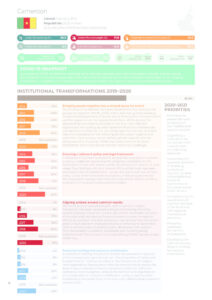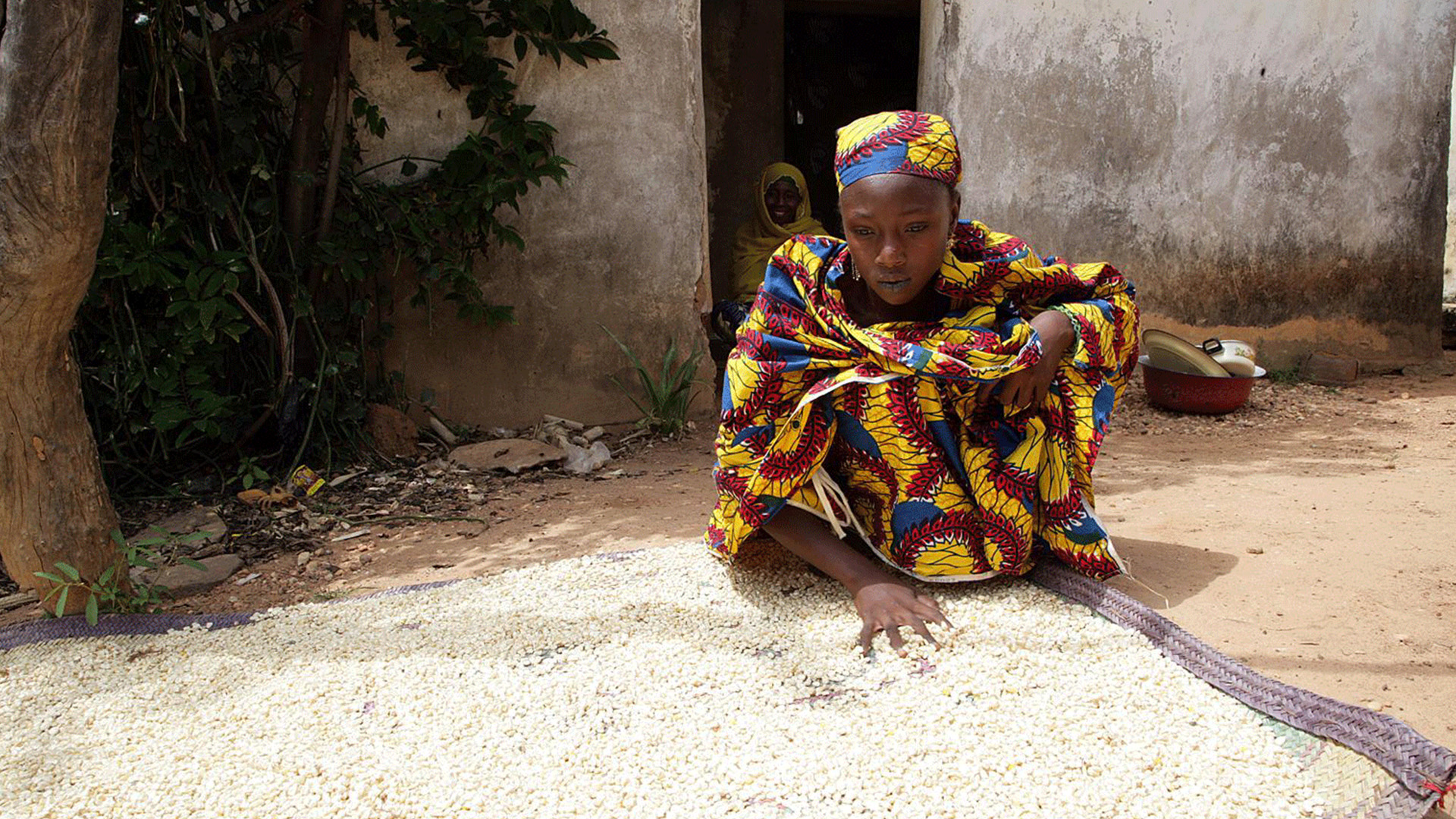Nutrition situation
Under five stunting (%)
28.9
Under five overweight (%)
11
Anaemia in women 15-49 years (%)
41.4
Under five wasting (%)
4.3
Low birth weight (%)
12
0 to 5-month-old exclusive breastfeeding (%)
39.4
Adolescent overweight (%)
Male: 7.4
/ Female: 17.3
Adult overweight (%)
Male: 25.2
/ Female: 41.7
Adult obesity (%)
Male: 6.1
/ Female: 16.5
Adult diabetes (%)
Male: 6.6
/ Female: 6.9
COVID-19 snapshot
As a result of COVID-19, platform meetings were held less regularly and, where necessary, virtually, and key points are included in the meeting agendas of the Technical Secretariat of the Interministerial Committee on combatting malnutrition. In addition, the continuity of community health and nutrition services is gradually improving.
Institutional transformations 2019-2020
Bringing people together into a shared space for action
The multisectoral platform has been divided into four working subgroups on nutrition (WGN): ANJE, Infant and Young Child Feeding, Integrated Management of Severe Acute Malnutrition, Micronutrients and Emergencies. At the regional level, these WGNs involve the decentralised territorial authorities in the four most affected regions, but the scaling-up and implementation of a multisectoral coordination mechanism are two challenges that remain. Activities take into consideration the following sectors: water, hygiene and sanitation, food security, social welfare, gender equality and the empowerment of women. While the media network has been established, the private sector network remains a challenge.Ensuring a coherent policy and legal framework
A consultant has been recruited to analyse the inclusion of nutrition in policy. Legislation governing the obligatory standards on the fortification of salt with iodine, edible oils refined with vitamin A, and wheat flour fortified with zinc, vitamin B12 and folic acid, has been developed with all stakeholders – as has the framework law on food safety. Lastly, there have been evaluations of the programmes for the integrated management of acute malnutrition and for profiling mothers with severely malnourished children.Aligning actions around common results
The multisectoral operational plan, with a common results framework, has been reviewed, and joint monitoring of priority actions is being carried out. Studies document the implementation of the plan and capitalise on lessons learned, in order to improve effects on nutrition. Activities carried out are derived from the action plans of each platform evaluated during a workshop in September 2019. A national capacity-building plan, developed with support from the academic platform, is available and currently being implemented. The process of institutionalising SMART surveys is also under way.Financial tracking and resource mobilisation
The multisectoral operational plan, with a common results framework, has been reviewed, and joint monitoring of priority actions is being carried out. Studies document the implementation of the plan and capitalise on lessons learned, in order to improve effects on nutrition. Activities carried out are derived from the action plans of each platform evaluated during a workshop in September 2019. A national capacity-building plan, developed with support from the academic platform, is available and currently being implemented. The process of institutionalising SMART surveys is also under way.2020-2021 Priorities
- Finalising the assessment and budgeting of the multisectoral operational plan.
- Organising a national forum on nutrition with a round table on mobilising resources.
- Supporting the academic platform in finalising curricula on nutrition training and establishing a body of nutritionists in the Cameroonian public service.
- Strengthening the coordination of nutrition activities at the local level with regional multisectoral platforms.
- Preparing roadmaps for nutrition ambassadors.
- Developing the SUN Civil Society Alliance strategy for resource mobilisation.
Download

